#it's not emulating heterosexuality/traditional gender roles
Explore tagged Tumblr posts
Text
I try very deliberately to not let either of the boys be the "woman" in the relationship, especially with Delmar being the smaller and (outwardly) softer of the two. That said- I think Delmar would be very happy with a pretty dress. Get to wear soft and flowery things like he wouldn't with "men's" clothing, sitting nice and cool in the Mississippi heat (he would have terrible skirt etiquette lmao), fussing with the flouncy skirt- just look okay

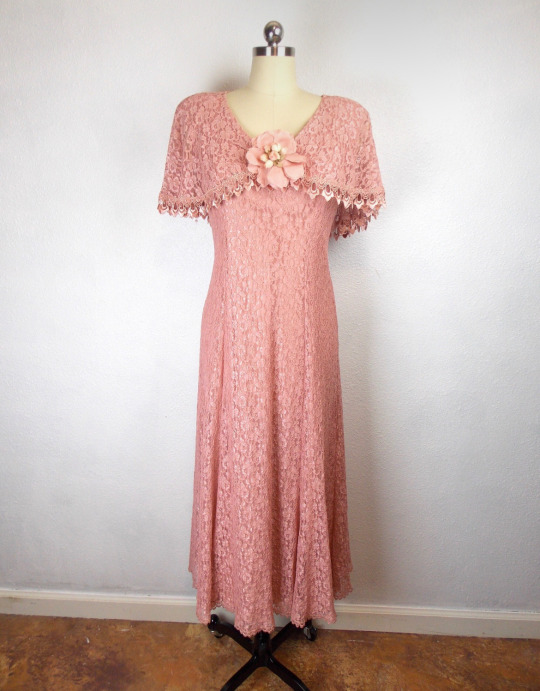
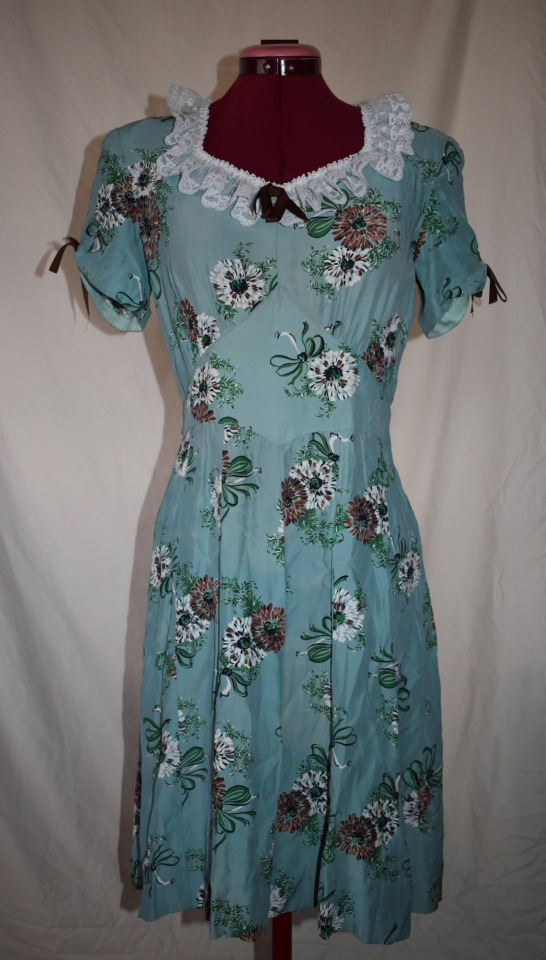
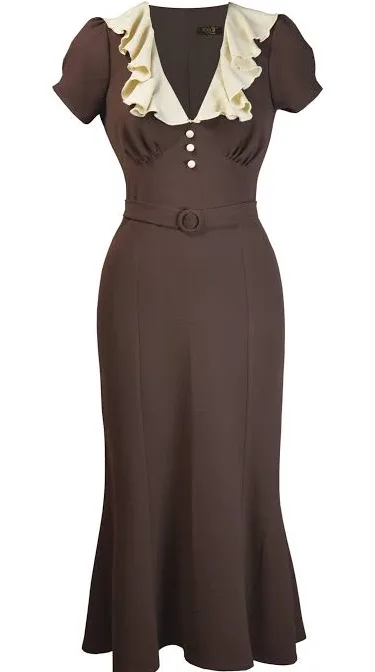
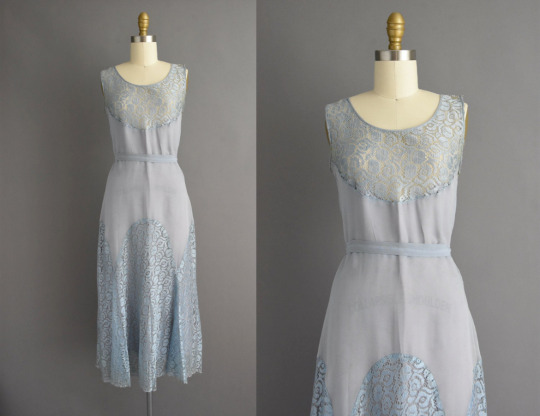
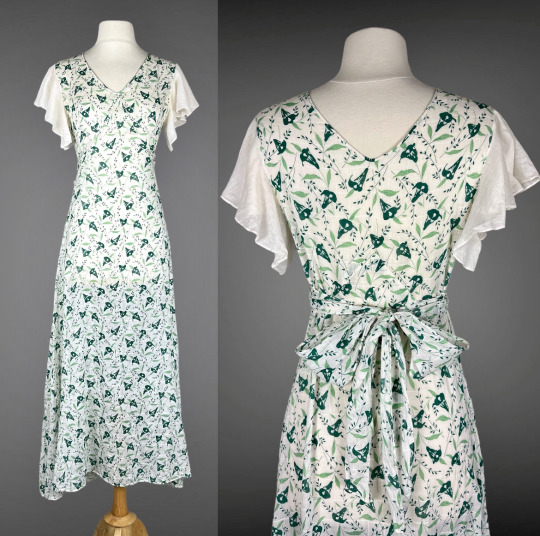
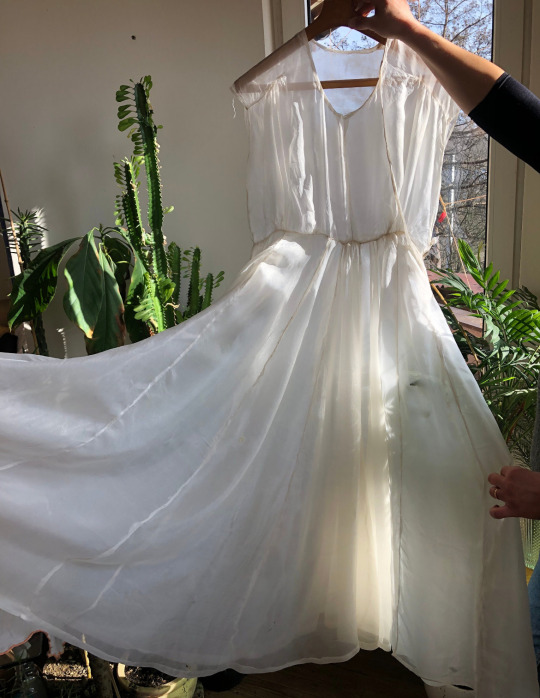
Put him in a cloche hat and he'd be set!
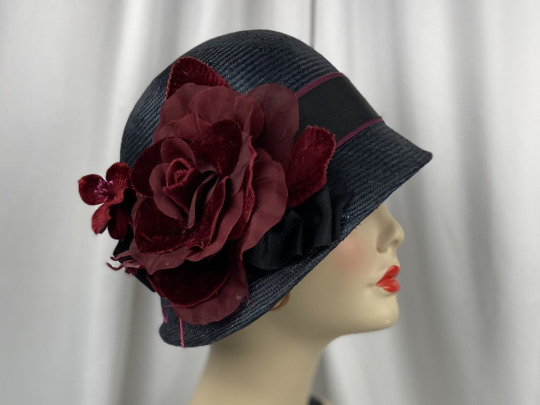
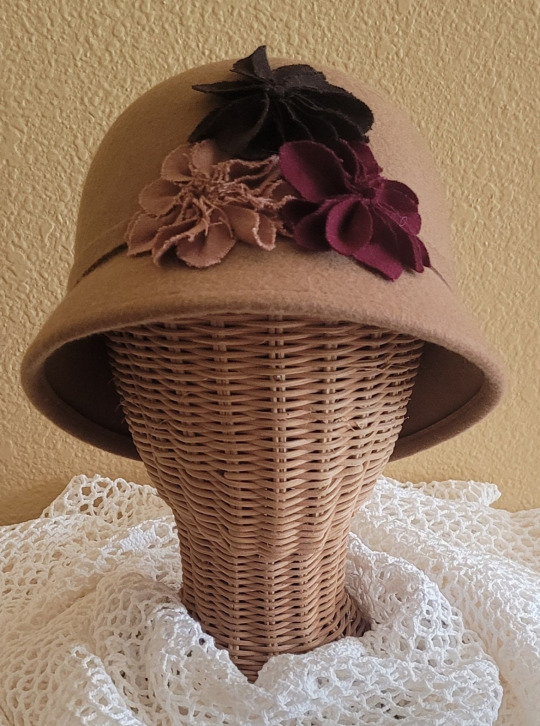
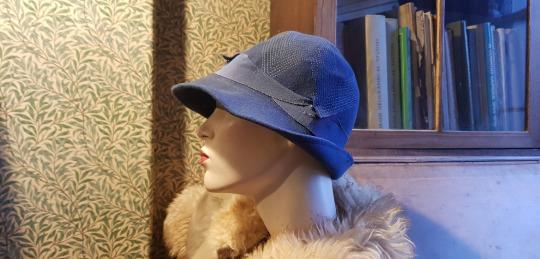
Maybe I'm silly but this is real to me. Wonderful little guy.
#it's not emulating heterosexuality/traditional gender roles#it's exploring things you wouldn't necessarily get to in different circumstances#self acceptance in one area can lead to a whole lot more self exploration#or at least that's my excuse for this#I have long said Delmar is a doll to me#and what is a doll without its little outfits#Pete would be so very stupid for him too#which he already is but#o brother where art thou#obwat#rambles#obwat headcanons#good ones
3 notes
·
View notes
Note
🌺 Hello lovelies! I'm a 21+ year old woman looking for someone to do a MxM original fantasy rp with!
🌻 I'm looking for someone who is interested in a degree of world building and plotting. I would love a "classic" medieval-esque world but I'm also open to alternative ideas as well (urban modern fantasy, other pseudo-historical settings... whatever else you can think of!). Our world doesn't have to be super original, in fact I'm very open to taking from existing IP and mixing and matching as we want but I love getting to come up with some lore that could be relevant to our characters (think "how does magic work?", "what abilities and weaknesses do our vampires have?", "what are the different elven cultures like? How do they view humans? how do the humans view them?" etc.)
Some of my favourite tropes for this are:
vampires
elves
witches
fae/fairies (Celtic/traditional depictions)
other mythological creatures?
magical realism
knights (and the royals they protect 👀)
angels and demons (not necessarily Christian/Jewish) and the occult
gods
djinn, genies (mythology or popular culture)
soulmates (😍)
...
(Honestly, I'm open to a lot more!)
🌷 Despite loving to world build I prefer character-driven/focused stories overall and am not overly interested in pure "action" (combat etc.).
🌼 For the roleplay, I would love to stick to one main (MxM) couple but I'm open to including other MxM or FxF side pairings as well (not a requirement and I don't mind sticking to only our main guys!). No MxF though, please! I am also more than open to focusing on important platonic relationships for our characters.
🌸 One thing I want to note is that I don't like it when MxM (or FxF) pairings emulate heterosexual gender roles. There should not be the feeling of "this character is the woman in the relationship because he bottoms" (of course I'm not against a man who is more feminine when it comes to his mannerisms or interests, I just don't want to have the feeling that this is a straight couple just with the pronouns switched out so please no stereotypical top/bottom or seme/uke dynamics).
🌻I'm open to eventually writing smut and we can discuss the details of that as well but please keep in mind I'm not really looking for a roleplay that overly focuses on that.
🌺I write in 3rd person, past or present tense depending on your preference but please no 1st or 2nd person. When it comes to post length, I'm not super sure what I'm looking for and don't want to limit myself either way but I think shorter posts might be easier for me to handle while starting out (of course it also depends on what is going on in the roleplay and I think starters/time skips probably require longer posts anyway). I would prefer to roleplay on Discord.
🌼 A little warning beforehand: While I have been writing original stories and fanfiction since I was 11, I'm a new roleplayer and don't have much experience with this. I'm also not a native speaker and not always available due to health issues. I might be able to reply every single day for a while and then disappear for a week or two. Please be okay with this if you decide to roleplay with me!
If you are interested in roleplaying with me, please like this post and I'll get back to you!
Thank you for reading ~
.
7 notes
·
View notes
Text
That post has got me thinking about how the queer community treats butches in general. And studs too, but I ofc have more knowledge, and are more comfortable talking about, the butch experience.
It's either unthinkable to be attracted to a butch, or butches exist only as an object of desire. Neither is accurate, as both ignore the butch's relationship to sexuality and desire. You don't have to like butches or be sexually attracted to us, but you should not treat us as if we are inherently undesirable. And on the flipslide, we are often seen as objects of desire. Not a person who is attractive, but a sexual object who exists for the gratification of a partner.
Gays are soo past upholding gender roles, except for butches. Because don't butches want to be big strong chivalrous men? Don't all butches do physical labor and work on cars and stuff? This ignores that fact that while butches are masculine, and often emulate masculine gender roles, we, the same as cis men, should not be expected to perform these gender roles. And not to mention how this isolates disabled butches who can't uphold these gender roles.
And these are sentiments I have seen expressed by gay people, often gay people who say they don't believe in sexualization and gender roles. Being butch can be so isolating, because as a gender nonconforming person I'm obviously Othered by heterosexual society. But the gay community is not immune to their own anti-butch sentiments. There's a problem with toxic masculinity in butch communities, and while butches are not immune to upholding it, I think it's important to consider how we're pushed in that direction, in the same was cis men are.
In short: butches are people, and while we may choose to uphold certain traditional pillars of masculinity, we are not defined by our masculinity, and our relationship to masculinity is our own to decide.
#now that last bit might be a bit controversial as many butches do consider themselves to be defined by masculinity#but you are always so much more than that#because masculinity kinda doesn't exist. in the same way gender as a whole doesn't#gender is made up so it can be whatever the fuck u want it to be#masculinity is also whatever the fuck you want it to be#which means you define masculinity. you are not defined by it#and if tomorrow i woke up and i was no longer butch. i would not longer be the same person i am today#but i would still be able to recognize myself. as there are other aspects of my identity that mean just as much to me as my butchness#and this is true of all butches#and this is ultimately what antibutch sentiment boils down to#the idea that butches are ONLY our masculinity. we our also our strength. our passion. our love. our creativity etc etc#butches are complex people outside of their butch identity. and being butch is only ever 1 part of a butch's self#and to any butches who want to argue with me: for your own sake find out who you are outside of your masculinity#because i know. i know your masculinity is important to you and it might feel like an attack to be told being butch is not all you are#but it's true#no one ever just one aspect of themselves
1 note
·
View note
Note
Can you help us figure out which type we are in the art of seduction?
While this can be a detailed process, here are my best tips I haven’t seen spoken about too much when studying seducer-type content – let me know if this was helpful and if you have any more specific questions! x
9 Seducer Types (With some qualifying characteristics):
The Siren: Epitomizes female sexuality and divine feminine energy (The Lover from Women Love Power archetype model)
The Rake: A successful playboy
The Ideal Lover: Tabula rasa of seduction (allow you to project your ideal image of the perfect lover onto them, so they can emulate it), a more evolved version of The Natural
The Dandy: Gender fluid, charms with the mind, and an eccentric, grandiose presentation (think alluring and quirky feminine heterosexual men, masculine heterosexual women who strike a sort of unexplained, captivating brilliance)
The Coquette: A Siren overtaken by dark feminine energy (hot and cold seduction, manipulative to their core)
The Natural: A childlike woman who leads with light feminine sexual energy
The Charmer: Attracts sapiosexuality (a sexual attraction to intellect) and embodies dark feminine energy (a subdued, intellectualized version of the Coquette)
The Charismatic: Attracts sapiosexuality with a combination of light and dark feminine energy
The Star: The sapiosexual equivalent of the Siren/Rake combined with the Ideal Lover
Some questions to consider when trying to determine your seducer type:
Is your seduction style more passive or assertive? Self or object focused?
How much do you lean into traditional gender roles?
Do you lead with light or dark feminine energy?
When seducing someone, do attempt to amplify, transcend (through intellect or performative presentation), or repress your sexuality?
Do you lead your seduction with the body or the mind?
Assertive seducer types – lead with self-projected energies: The Siren, The Rake, The Dandy, The Coquette (during ‘hot’ phases), The Natural, The Charismatic
Passive seducer types - lead with object-oriented energies: The Ideal Lover, The Charmer, The Star, The Coquette (during ‘cold’ phases)
Seducer types leading with light feminine energy: The Ideal Lover, The Natural
Seducer types leading with dark feminine energy: The Coquette, The Charmer
Seducer types with a more balanced light & dark feminine energy: The Siren, The Charismatic, The Star
Seducer types with overt sexuality: The Siren, The Rake, The Ideal Lover (situational, depending on target), The Coquette
Seducer types with transcendent sexuality: The Ideal Lover (situational, depending on target), The Dandy, The Charmer, The Charismatic, The Star
Seducer types with repressed sexuality: The Natural
Seducer types who lead with their physical presence: The Siren, The Rake, The Coquette, The Dandy
Seducer types who lead with their intellectual presence: The Ideal Lover & The Star (psychological projection is their superpower), The Natural (in this case naiveté), The Charmer, The Charismatic
#art of seduction#robert greene#seduction#siren#dark femininity#light feminine#divine feminine#dark feminine energy#self development#life advice#femme fatale#coquette#note to self#self growth#female manipulator#shadow work#high value mindset#feminine energy#it girl#48 laws of power#psychology#high value woman#hypergamy#hypergamous#femmefatalevibe
241 notes
·
View notes
Text
Why I’m Deeply Concerned about Denis Villeneuve’s Dune and You Should Be Too
Let me Preface this by acknowledging Dune has yet to be released so it may very well be that many if not all of my concerns and frustrations will prove unfounded. Furthermore Dune was a novel published in 1965 by an extremely homophobic*, cis-gendered and heterosexual white man so I am by no means arguing deviations shouldn’t be made from the original text. They absolutely should especially because the series themes about human complexity and questioning authority seem depressingly timeless and deserve repeating.
However- in the original novel the Fremen were explicitly based on the Bedouin cultures of North Africa and MENA inspired elements permeate all aspects of the culture in Dune, both Fremen and Outsider. Yet despite two adaptions (three if you count SyFy’s adaptions of Dune Messiah and Children of Dune) none have cast MENA performers or tapped anyone of MENA origin to work behind the scenes (Denis Villeneuve’s adaption included).
This current adaption has instead chosen to cast almost exclusively Black actors as the Fremen. I say ‘almost’ because Stilgar, one of the Fremen leaders in the book is played by the white Javier Bardem.
While there is some potential narrative justification for the Fremen being Black as it’s mentioned in the book the Fremen are descended from a slave race and the term Fremen is actually derived from ‘Free men’ after several of these former slaves escaped into the desert.
Fremen tradition says they were slaves. . . for nine generations. -Terminology of the Imperium, Dune
Though that potential justification is weakened since Javier Bardem is again white. It also doesn’t help that Paul Atreides (played by the equally white Timothée Chalamet) is poised to also take on a leadership role both secular and religious amongst the Fremen as a long awaited warrior prophet and messiah.
MENA actors make up less than one percent of current television roles and have equally small presense on the big screen. When they are shown they usually only given stereotypical roles and rarely make any kind of headway in genre films like science fiction and fantasy. It’s a depressing lack of inclusion of people who are quite literally the inspiration for the novel.
Which brings me to the character of Liet-Kynes who’s casting I am most disturbed by. (Spoiler Warning for the 55 year old book from here on out). In the book Liet-Kynes is a half-Fremen man who acts as not only a leader amongst the Fremen but is also able to pass largely undetected in non-Fremen society because of his mixed heritage. Something he uses to protect his people from a largely hostile ruling class but as a man of science remains deeply skeptical of his peoples’ prophesies surrounding Paul Atreides’ messianic potential. (With good reason it turns out as those ‘prophecies’ were largely planted by the outsider Bene Gesserit Sisterhood for their own ends) While he’s initially won over by Paul and his father Duke Leto’s charisma he later comes to regret giving them his allegiances realizing as he dies the danger a messiah like Paul poses to the Fremen culture’s integrity.
No more terrible disaster could befall your people than to fall into the hands of a Hero. . . Dune, Chapter 22
Frank Herbert even has Liet’s body circled by hawks who are the traditional emblem of the Atreides to hammer the point home that the Atreides will be feasting themselves on the vulnerable Fremen.
To put it bluntly Liet’s narrative purpose is to die leaving no room for the Fremen or the larger Dune universe the chance to escape the chaos Paul’s messianic destiny will bring. And Denis Villeneuve has chosen to cast Sharon Duncan-Brewster a Black woman in this role. Assuming Liet-Kynes’ character follows a similar narrative arc as presented in the original novel we are going to be presented with a Black woman who comes to believe a white boy is her long awaited messiah and then be disposed of.
We are in something of a long needed cultural reckoning. Where we have been forced to acknowledge how constantly we have treated not only Black people but Black women as disposable. So in addition to the deliberate lack of MENA cast in any roles let alone Fremen I find this particular change not only tone-deaf but down right despicable. Even worse the film will be including the characters Jamis and Harah. Jamis is a man who Paul kills early into his introduction to Fremen society and who’s widowed wife Harah then tries to seduce to secure her own life but that of her two orphaned children. Which smacks of a multitude of racial stereotypes.
As a queer fan of the books who frequently enjoys dragging Frank Herbert for his authorial inconsistencies and eccentricities (he had a recurring obcession with athletically built red heads with oval shaped faces and wide generous mouths) I am all for radically altering the books’ text. But I am not seeing that with this adaption. Instead it feels like a poorly thought out attempt at diversity as conceived by three white, cis-het white men and I for one will not be watching.
Foot Notes and Sources Cited
* Bruce's homosexuality was had never been accepted by my father, and they had never reached full rapprochement. Still, when my brother came to Seatle he broke into tears while riding in the backseat of my car. Penny and Jan consoled him. My brother told me later that he didn't cry from love, because he didn't feel he loved the man. He said he cried from what he had never experienced in the relationship between his father. I missed almost everything," Bruce said. "I never saw the good side he showed you. He wasn't there fore me." He went on to say that he couldn't watch movies or television programs having to do with father-son relationships, because they upset him so much. I told him that Dad loved him, that he spoke of him often and fondly, and that he just didn't know how to show it. I reminded Bruce of all the ways he emulated our father, and of the many interests they shared . . . electronics, computers, science fiction, photography, flamenco guitar . . . and I asked if that could possible mean that he loved Dad after all. My brother fell silent. -Brian Herbert, Dreamer of Dune
Ramos, Dino-Ray. “Study Shows Bleak Middle Eastern & North African Representation, Reinforced Stereotypes On Primetime TV.” Deadline, Deadline, 10 Sept. 2018, deadline.com/2018/09/middle-eastern-north-african-representation-primetime-tv-mena-quantico-blacklist-tyrant-diversity-1202458101/.
Ramos, Dino-Ray. “'Dune' Trailer: Denis Villeneuve & Cast Talk How Adaptation Of Sci-Fi Classic Will Engulf Audiences On An Epic Scale.” Deadline, 9 Sept. 2020, deadline.com/video/dune-trailer-denis-villeneuve-timothee-chalamet-rebecca-ferguson-oscar-isaac-warner-brothers-sci-fi/.
Coleman, Itané O. Http://Www.ncurproceedings.org/Ojs/Index.php/NCUR2017/Index, 2017, www.ncurproceedings.org/ojs/index.php/NCUR2017/article/view/2246.
HERBERT, FRANK. DUNE. ACE Books, 1965.
Herbert, Brian. Dreamer of Dune: the Biography of Frank Herbert. Tor, 2004.
Please Donate to Black Lives Matter
9 notes
·
View notes
Text
Name: Elizabeta Igoreva Mikhailova
Known Aliases: Eliza, Liza, Solnyshko (Little sun), Ryzhika (Red head), Chudaka (weirdo), Anniy (reference to the play character Annie)
Age: 26
Height: 5'10
Weight: 166
Hair color: Rust red
Eye color: Light blue
Nationality: Russian
Sexuality: Heterosexual
Family: Mother - Valeria Mikhailova (deceased), Father - Igor Mikhailov, Flatmate - Tomik Robakov, Flatmate - Dotnara Robakova, Flatmate - Elana Robakova, Flatmate - Artem Robakov
Appearance: Eliza is tall with a medium build and endomorphic figure. She has some undefined muscle but she's by no means petite. She has red, straight hair cut into a choppy bob that flairs outwards at its ends. She has a heart shaped, freckled face with a cleft chin and a mole on the left side of her chin. Eliza has a fondness for American fashion, especially the 70s decade. She wears popular Soviet fashion for the period as well as clothes she has altered herself. For school she wears semi formal clothes or a white uniform.
Personality: Headstrong, forward, and bold are her most noticeable traits. She is very kind and likes to take risks. Being raised by a single father he tried to instill gender roles/traditional femininity into her but she ended up being just as stubborn and direct as he was (though she avoids swearing.) If caught off guard she can get overwhelmed and either ramble or clam up. She's a huge dork with an interest in Western culture. She makes obscure references she learned from (banned) films or from friends who had contact with Westerners. Even though she's academically smart she often lacks things like common sense or just doesn't always think things through. She's also a bit clumsy and forgetful.
Early life: Eliza was born in Leningrad (St. Petersburg) in 1960. Her mother died of complications during the delivery so Igor raised the child alone until he moved to Moscow four years later into a shared khrushchyovka with another family, the Robakovs, who became family to her. They often watched her and would pick her up/drop her off at school. She adored her father and inherited his stubborn nature. Eliza often learned things the hard way because of this. Her father often being very busy as a cop Eliza had a lot of time to herself and would hang out with classmates after school and was fairly independent from a young age. At fifteen Eliza's new roommate, Elana, was born. Since she was potty trained they shared a bed and over time Eliza became like a big sister to her. She always had a helpful nature and wanted to take care of those she cared about so she pursued the medical field.
Eliza's interest in western culture started in her late teens from magazines and books. She became fascinated with specifically American culture and tried to emulate it to the best of her ability. When she got into academy she became close friends with her upperclassmen Tatiana. After veting her and seeing she was trustworthy she brought her into the world of illegal movie showings. Eliza loved these foreign films that were dubbed by a friend of a friend. It was her peek behind the Iron Curtain. This was her start into getting into contraband. She would covertly buy bootleg records and keep them stored at a friend's house where she'd go to listen to them. All of which is a felony bordering on treason for the time. This was a huge secret kept from those outside their circle.
It was during her metro ride to school she met Dmitriy. She complimented his nice coat and asked to touch it when the rest of the passengers steered clear of him knowing he was probably trouble. They spoke briefly and Dmitriy was immediately infatuated with her. In the jjba verse he used his stand to observe her in secret. In the main verse he often tailed her preferring to watch the object of his affection from a distance until she confronted him. After an awkward interaction Dmitriy made his feelings toward her clear but left out some important information about his true identity. Now both having something to lose it leveled the playing field more or less. She gets a call from him weeks later about attending an outing. This was their first unofficial date. They hung out to socialize a few more times over the course of two months before officially dating. She is aware of her boyfriend's status and he's aware of her treasonous activities. They gladly keep each other's secrets. They have been dating for close to a year now.
Organization status: N/A /Girlfriend of the pakhan. She is affiliated but not a member.
Random facts:
※ Eliza has undiagnosed ADHD or "Hyperactivity" and tends to easily get distracted, quickly lose or gain interest in topics, and can get bored or overstimulated easily.
※ She is Catholic. Though state sanctioned scientific atheism was put in place religion still existed behind closed doors. Her father is not but her flatmates are.
※ Eliza on occasion has helped bootleggers by providing old x-rays for disposal for them. In return she was gifted with a Beatles record.
※ She loves the Beatles. She barely knows any English but will cheerfully babble along to a Beatles record. Her favorite album is the self title album The Beatles.
※ Igor is on to his daughter but isn't sure what she's doing but he has a gut feeling she's keeping something from him. He also doesn't trust Dmitriy one bit.
※ Eliza does aerobic exercises that air on the regional television program. She wears the spandex and everything.
※ Eliza knows how to use, take apart, and shoot a rifle but never had the stomach for hunting. She cried at nine when her father killed a rabbit on a hunting trip.
#//strawberry fields forever: eliza mikhailova#//thieves and fools: muses#//memories of long ago: 80s verse#//character bio#long post#//ooc post#//ooc#this is it#that's all the muses
3 notes
·
View notes
Note
hey! i have some gay characters who are experiencing compulsory heterosexuality (? one of them isn't a lesbian so im not sure if that's the right word for him?), and i want to show different and similar ways they've experienced it. i guess my question is what are some ways i can show that? i'm having troubles thinking of more ways to show that outside of what i've personally experienced. thank you!
My old enemy. Coercive heteronormativity.* For those who don’t know, it’s the societal pressure that leads to LGBT+ people identifying as cis and het when in reality, they’re only doing so because no other option has been provided to them, they have internalized homophobia, or it is difficult for them to think beyond the role they are trapped in. Usually, those experiencing this will fail at the roles they are attempting to emulate. For example, a gay man experiencing this might fail to pick up girls and face ridicule for it. As a lesbian, I’m not very good at performing typical feminine roles. I never really was. I dress terribly and I hate makeup. (To be fair this could just be a “Ginger is gross” thing rather than a universal lesbian experience but). You could show some of these moments in your story - your characters attempting to perform their roles, but failing because it’s not who they are. I’ve heard stories from same gender couples about how they tried to fill traditional masculine and feminine roles in their relationship. For some this was a choice made free from the influence of coercive heteronormativity (for example, femme and butch lesbian couples), but for many this was the only way they had seen a healthy couple act, so they were simply following in their footsteps, for better or worse. If your characters are in a relationship, this could be an interesting struggle for them to face!Hopefully this is helpful! If any of our followers have ideas, feel free to add! ~ Mod Ginger
* I just want to add, the phrase “coercive heteronormativity” was coined by a transmisogyny affected person** as a replacement term for “compulsory heterosexuality” which was coined by a TERF (Adrienne Rich).
**I don’t have a source or know who the person is to give credit, this is just what I’ve heard.
- mod nat
42 notes
·
View notes
Text
Gender Diversity Around The World

Before Western colonisation of indigenous peoples or the introduction of social constructs, such as gender specified clothing, toys and behaviours, gender diversity was widely accepted and celebrated in many cultures around the world. However these introductions have shaped modern societies, and the idea of gender fluidity and expression has unfortunately been lost or suppressed, but there are some cultures that still honour these ancient traditions today.
Muxes, Mexico
Muxes are a third gender that exhibit both male and female qualities within indigenous communities of Mexico's Oaxaca Peninsula. Muxes are one of the longest standing examples of indigenous gender diversity, tracing back to the intersex gods and deities of Aztec and Mayan iconography.
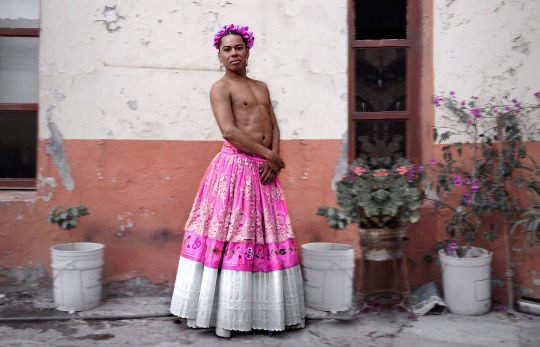
Wikimedia Commons | Mario Patinho
Although there are similarities to transgenderism, muxes wish to emulate femininity but do not necessarily identify as women. In fact it is the blend of both male and female characteristics that makes muxes so distinct. Ivan Olita's short documentary features modern muxes explaining the third gender in their own words:
"I myself represent duality of two things, because I have the strength of a male and the sensitivity of a female; in the Zapotec vocabulary Muxes means both feminine and fear...” "In Zapotec we use la-ave if we talk about people... this is our language there is no him or her”
Despite a prejudicial past muxes are now fully accepted in the region and play an important role in local communities.
Bugis society, Indonesia
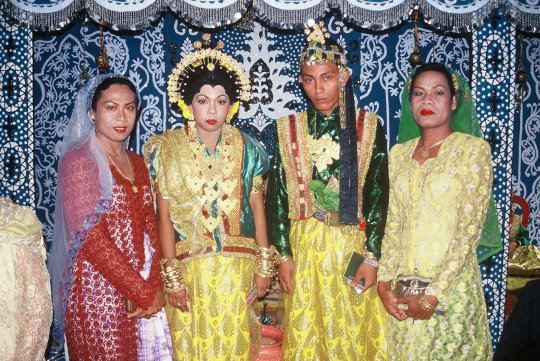
Flickr | sharyn davies
Bugis society in Indonesia's South Sulawesi actually recognises five genders. These consist of male and female; Calabai, biological males who embody female qualities and social roles; Calalai, biological females who take on a masculine identity; and Bissu, those who encompass all of these gender aspects.
Calabai live as heterosexual women, whilst Calalai live as heterosexual men, both taking on roles synonymous with their gender identity.
Bugis people who are bissu are referred to as gender transcendent, meaning they socially and even sometimes biologically encompass characteristics of all Bugis genders. Though not true of every several-gender culture, people who exhibit more than one gender, or indeed all gender types, are commonly appointed as shamans, priests or other spiritual figures. For instance, bissu act as spiritual advisors and bequest protection for those about to make the pilgrimage to Mecca.
Quariwarmi, Peru

Before the Spaniards conquered the Inca Empire an ancient third gender was recognised. Quariwarmi were androgynous shamans tasked with performing rituals in honour of the god chuqui chinchay, a dual gendered jaguar deity. These shamans were representations of the dual forces in Incan mythology; male/female, past/present, living/deceased.
However, these Incan beliefs toward gender were wrong in the eyes of the oppressive conquistadors and thus were persecuted. Unfortunately this is just one of many multiple-gender cultures that has been historically victimised.
Gender diversity is an integral part of human history and culture, and the more globally aware we are of non-binary gender communities the more acceptance there will be in the world, leading to kinder and more productive equal societies.
You can immerse yourself in these vibrant and beautiful cultures by volunteering on one of our Adventure Trails through Central America or South East Asia.
By Thomas Phillips - Online Journalism Intern
Frontier runs conservation, development, teaching and adventure travel projects in over 50 countries worldwide - so join us and explore the world!
Get more from us on social media with Facebook, Twitter , Instagram and Pinterest.
#gender#diversity#lgbtq#culture#ancient history#tradition#humanity#human history#indigenous#people#world#travel#seetheworld
97 notes
·
View notes
Photo

𝑎𝑠 𝑓𝑙𝑖𝑒𝑠 𝑡𝑜 𝑤𝑎𝑛𝑡𝑜𝑛 𝑏𝑜𝑦𝑠 𝑎𝑟𝑒 𝑤𝑒 𝑡𝑜 𝑡ℎ𝑒 𝑔𝑜𝑑𝑠. 𝑡ℎ𝑒𝑦 𝑘𝑖𝑙𝑙 𝑢𝑠 𝑓𝑜𝑟 𝑡ℎ𝑒𝑖𝑟 𝑠𝑝𝑜𝑟𝑡.
❛ steven yeun, cismale, he/him, 75 ✶ was that theodore “theo” hwang gracing the streets of alestria? i heard the scorpio’s order is the phoenix, and rumor has it they are diligent + capricious which must be why they are a guard. their allegiances are currently with their faction, but who knows how serious that is. ❜
𝒅𝒐𝒔𝒔𝒊𝒆𝒓 / 𝒃𝒊𝒐𝒈𝒓𝒂𝒑𝒉𝒚 / 𝒑𝒍𝒐𝒕𝒔
full name: theodore “theo” hwang nicknames: theo, prefers to be called this rather than his full name. age: 75 date of birth: november 03, 1946 hometown: alestria gender & pronouns: cismale, he/him orientation: heterosexual, demiromantic occupation: guard order: phoenix faction: day * tw: death. please continue at your own discretion
background
- dating back to his great-great grandfather, all the men in his family were loyal, high ranking guards to the crown. a few managed to gain the role of head guard but were plagued with some curse that led them to their untimely death while active on duty.
- it was only natural that theo were to do the same, shouldering the expectations of his family to keep tradition, as well as their family name, going strong.
- a part of him has always been reluctant in joining, having seen the fate of his fellow kin. yet a part of him knew that his duty was to his family first and internalized all doubts.
- his father was a respectable guard, many often relaying how they thought of him to be the next head guard, perhaps even hired as the right hand man of the king himself. the hwangs were more than pleased at the praise, looking to theo’s father as a reminder of what they stood for: honor, justice, and strength.
- at home theo was subjected to all sorts of training since youth. there wasn’t much time to play in the streets with his friends or live a normal childhood. he was taught tactics, strategy, and hand to hand combat. it was when they discovered that he were a pheonix did the training increase tenfold.
- theo tried his hardest to achieve high marks at alestria academy, though his family was disappointed that he would often struggle to survive the highly competitive atmosphere. to them theo was good, but not quite good enough. even with his rare order, he had done little to stand out against his peers.
- during his induction to the guards, many made it known that they expected great things from him, due to his order and his family name. the expectations of others now suffocated him, leaving him with distaste for his occupation despite having gone great lengths to get where he was today. still, he remembers the slight smile his father gave him that morning and knew that this was what he was meant to do.
- it wasn’t long until his father was offered the role of head guard, to which he immediately accepted. theo begged his father to turn down the role, that they both knew what accepting it would entail. still, his father dismissed his request and took the position with great pride, his family applauding him for such a feat.
- the day his father died, theo wept for weeks after. despite being raised with strict discipline, theo had nothing but unwavering admiration for the man who done so much to get him to where he was today. his family mourned, and pushed theo to take his father’s place as the new head guard.
- it was obvious he wasn’t ready, wasn’t willing to take such a great leap for a monarchy who did nothing to commemorate a man who sacrificed his life in their honor. soon a curdling hatred grew in the pits of his stomach, his loyalty to the crown waning as time passed.
- theo began blaming them more and more, hating them for sitting comfortably at their thrones while blood was spilled in their honor. - he knew better than to be vocal of his objections, and knew without a doubt that his family would disown him should they be known of his feelings. valuing them above anything else, he remains tight lipped, but has recently been inquiring of any possible rebels. because he is a guard, finding honest information was near impossible.
personality
- masking his emotions was one of the first things his father taught him how to do firsthand. despite having a very stoic demeanor, theo can be quite passionate about things with the rare few he is comfortable with.
- most of his life comprised of repression, keeping his true self into the shadows where it cannot be seen nor heard.
- on duty he emulates his father, refusing to engage in tomfoolery or slacking off. many of his fellow guards don’t take his lack of emotions too seriously and often poke fun at him for it.
- he solves problems logically and efficiently, though when left to his own devices can often be in an internal struggle between his conflicting interests and what is meant to be right.
- often goes on runs to clear his mind or work through his emotions. never having the opportunity to do so verbally, he does engage in physical activity as a means of distraction.
- his heart is not a big one. there is his family, his faction, and not room for much else.
- does not respect nobility as much as he should. he thinks of those in high positions to be cogs in the machine of compliance.
- blames the royal family for not doing better to protect their people, thinks of the deaths of others to be blood on their hands.
#solaria.intro#// took forever to get this done but finally!! his intro is here!! pls write with me and theo <3
4 notes
·
View notes
Text
[ID: Two white candles. The first has a purple label reading "Butch Please", and the scent listed as "Spiced lavander". The candle's lid has a paragraph of text, reading:
With rigid gender roles enforced by society, the early post-war lesbian subculture developed the terms Butch and Femme to denote the masculine and feminine members of a couple respectively. Some took issue with this emulation of heterosexual relationships, while others saw it as a subversion of traditional female gender roles. Today Butch, Femme, and terms in between act as modes of self-expression of one's style, gender identity, and sexuality.
The next candle has a similar label, but with maroon text that reads "Summer of 1969", and the scent as listed "Hot Cinnamon Candy". The paragraph on the candle's lid reads:
The 1969 Stonewall Uprising was a pivotal moment in the fight for LGBT+ rights, when patrons of the Stonewall Inn and surrounding bars fought back after police had become violent. At the time, police raids on gay bars and arrests made for "same-sex dancing“ were routine. People across race, gender and sexuality came together to support a common goal, liberation. The event sparked the formation of activist organizations and the pride marches which continue to this day.
Both candles are called "Pride Candle" on the bottom right corner of the label. /End ID]
i’ve been seeing ppl clown target’s pride merch like the ugly graphic Ts but can we talk abt the candles
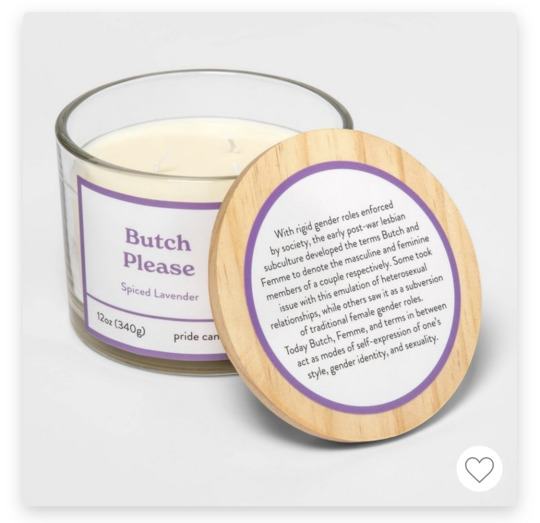
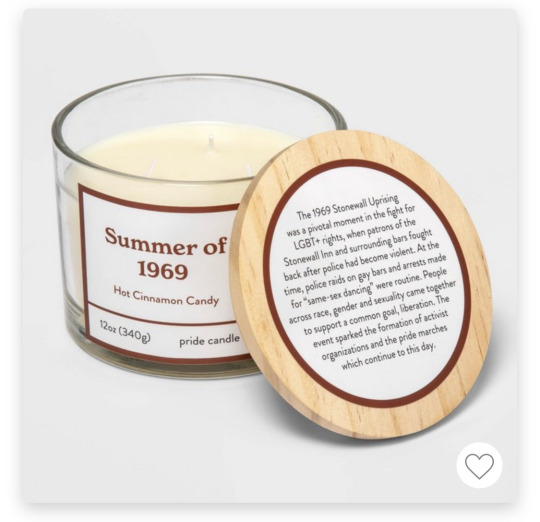
like living in 2022 is sooo wild companies r now tryna profit off of our history too like aesthetizing an uprising i? fuckin stonewall candles who came up with this
1K notes
·
View notes
Text
Dylan Vegas
KIN V10
03 May 2017
Drag Will Never Be Mainstream
What is drag? To the outsider who hasn’t much knowledge on the subject, a likely response to this question would be that it is the practice of a man dressing up as a woman, acting like a woman, trying to encapsulate the idea of what a woman is; while this isn’t to say that this wouldn’t be an accurate depiction of what drag can typically be, it’s only a fragment of the many definitions that describe what drag truly is and means to the individuals associated with the culture. Drag is more than just dressing up, presenting oneself in the feminine form as a means of entertainment value. Drag has long-standing roots within the civil rights movement for the LGBT community, many well-known pioneers of drag having been important figures in sparking change and revolution, testing the ways people viewed individuals who didn’t fit into a largely heterosexual society. And yet, so often is it that these pioneers of the community, the men and women who worked so hard to fight for the rights we have achieved today in the year 2017, are instead displaced or forgotten about, especially when they survived and advanced in a time full of intense oppression and discrimination for like individuals as themselves.
Beginning with possibly the largest event in LGBT history, the Stonewall Riots took place during a time with heavy police presence and interference in largely gay-inhabited areas, targeting the individuals who indwelled these safe places as a means of surviving, as many were often ostracized from their own communities due to their sexual orientation and non-conformation of traditional gender values. The Stonewall Inn, a well-known hangout for people such as these, was usually under heavy scrutiny by law enforcement. The Stonewall Inn “was one of the few places in the city that the gay community was able to commune without suffering harassment from the police and public shaming. Furthermore, the regular patrons of Stonewall were not the mainstream members of the gay community (white males), but rather the most marginalized members. The most common patrons at Stonewall were drag queens, transgender people, butch lesbians, male sex workers, and homeless youth.” (Femme Fatales) Within this building, people were free to express themselves in a way that defied the typical views of gender, with men allowed to be as effeminate as they wanted and women as masculine. Amongst the crowd were also notable figures, such as Marsha P. Johnson, Miss Major Griffin-Gracy, and Sylvia Rivera, three drag queens who would play major roles on the night of the Stonewall Riots and the following movements to come. It’s important to note, however, that while they did perform in the drag circuit and referred to themselves as drag queens, they actually identified as trans women. During the time, the community didn’t have much of the vernacular that we do today, and phrases such as transgender weren’t as commonplace during the time.
On June 29th, 1969, just after 3 a.m., police began to raid the Stonewall Inn due to the club committing various violations, such as serving liquor without a license. For the police, they were hoping to have it be a routinely bust, guiding the patrons inside the bar to leave the building and await legal action. “Initially, when the cops forced the men and women inside to line up, show drivers’ licenses, and prepare to be arrested, everyone did as they were told, despite some cheeky backtalk. But as crowds gathered outside and the harassment built, a once buoyant, even carnivalesque mood was transformed into active rage.” (Wolf) Complacency quickly turned into anger, and those who had been displaced outside had begun to fight back towards the police. “In the tension-filled atmosphere on the street, something ignited the crowd’s anger – perhaps the arrest of a lesbian or the abusive treatment of a drag queen or the cops’ homophobia in general or some combination of these and other factors.” (Bravmann) For hours, the fight between patrons and police would continue, a cat and mouse game ensuing as one baited another and further escalated the fight, which would commence after a five night-long battle. In the aftermaths, much more awareness was raised regarding the plights the LGBT community was facing on a daily basis, and advocacy groups would be created in almost every major city. The anniversary of this event would be remembered every year that followed, with those in the community honoring those who fought for them and helped them earn their rights.
Jumping forward almost two decades, the art of drag had become much more commonplace within the LGBT community, allowing those who partook in the culture to create a name and livelihood for themselves. A major scene during the time was the drag ball circuit in New York in the mid to late 1980’s, ceremonies and events in which individuals could compete in competitions under different categories, a scene that was documented in the acclaimed documentary “Paris Is Burning”, directed by Jennie Livingston and released in 1990. Chronicling prominent figures within the ball circuit and giving a view into these hidden away establishments, the film gave an in-depth look at the way drag had changed and was perceived, and examined various anthropological themes based upon the construction of gender, sexuality, ritual, and kinship within the LGBT community, specifically the black and latino community.
Within these competitions, entrants would participate in the category of their choosing, a category being a type of look or style the judges were looking for, these categories actually being open to both men and women. While there were certain genres geared towards the tradition ideas of drag, such as “Femme Queen Realness���, which was judged upon the participants ability to emulate a feminine look and behavior, there was an a category the complete opposite of this that individuals could compete in, with “Butch Queen Realness”, where gay men would be judged on their ability to blend in with heterosexual men. An androgynous style had emerged during this time, with individuals blending the typical depictions of masculinity and femininity. A large presence was also placed on performing, the audience cheering as the competitors vogued and dipped and spinned across the ballroom floor, a genre of dance that has its roots planted deeply in queer black and latino culture. While “Paris Is Burning” was one of the first to actually allow a glimpse into the drag ball circuit, especially a moden-day viewpoint of it during its time, drag balls had existed much longer prior to just the 1980’s. “Queer culture among the black working class was not limited to Harlem or to the period of the Harlem Renaissance. From the 1930s through the early 1950s, drag balls and drag cabarets proliferated in African American neighborhoods. A variety of drag balls took place in black, working-class areas of Chicago during this period...”
0 notes
Text
"Glamour” Critique and Semiotic Analysis
October 2007
The cover of the September 2007 issue of Glamour magazine proclaims, “Look and feel your sexiest at 20, 30, 40,” illustrated by the beaming cover girls Claire Danes, Queen Latifah and Mariska Hargitay. Deliberately diversifying age and race, this cover seems to convey that Glamour signifies “every woman” and therefore most North American females should readily relate to its contents. Upon closer inspection, however, Glamour appears to represent a highly specific social identity, a role with rigid normative boundaries as highlighted in one of the issue’s articles, “Am I Normal?” (244). Through the strategic use of images and advertisements, Glamour creates and reinforces a consumerist identity for its readers that socially constructs them as white, middle-class, heterosexual and pre-menopausal women with an inevitable and insatiable desire for beauty and fashion products to transform their flawed lives.
To create Glamour readers, and therefore an audience, the magazine constructs a Glamour identity through the visual and written presence of certain bodies represented in certain ways over others. The issue’s images convey racialized representations of normality: 81% of the visible faces across editorial copy and advertisement are white, 14% are black and 5% are North Asian (notably, no other ethnicities appear). In makeup and hair sections, all models are white save the one advertising a blush for “any skin tone” (106). Furthering the privileging of whiteness, several sections emulate a nostalgic, old Hollywood glamour: in “Look at all these party Dos!” (86), for example, an excited reporter’s narration details encounters with the white, celebrity women in ball gowns pictured in the article alongside classic stars such as Elizabeth Taylor and Diana Ross (one of two black women in the entire spread).[1] In contrast, both an article about Roshaneh Zafar’s charity work in Pakistan (102) and another about female victims of the Congolese civil war (288), drastically construct non-American, suffering black bodies as the “other.”
Images and advertisements illustrate the bodies of a Glamour identity, while the text describes the ideological situation of these bodies, primarily through the assumptions made in hailing. According to the text, Glamour women are, in addition to being white, avid consumers perpetually seeking to modify their bodies. Titles hail, “what you’ll wear next” (377), “what we all want now” (106), and apparently the Glamour woman wants material goods as a reward for working her likely corporate job (“Glam cam” asks readers, “Show us your office space!” (84)). Glamour hails, “Free! Free! Free! Best giveaway ever! No, you’re not dreaming…” (74), assuming and therefore creating an audience that inevitably and giddily desires $995 patent leather purses. The Glamour identity is constructed as one with weight “problems;” the September 2007 issue contains “calorie math” (179-194) and exercise tips to beat “muffin-top,” (184) a presumed slang term for abdominal fat. Without knowing the true sizes of its readers’ bodies, however, Glamour illustrates this particular article with a thin model pinching the fat-free skin of her midsection, thus ensuring that any body is indeed “fat” in comparison and therefore in need of the exercises.
The Glamour woman, according to the magazine’s assumptions, is heterosexual; articles such as “Men, sex, and love” (209) and “a man’s opinion” on “what’s sexy, what’s scary in bed” (222) exemplify the issue’s erasure of diverse sexualities. The Glamour identity is marriage-bound, highlighted by articles about the imminent married life (228). Finally, once married, Glamour women will “make babies” (192) as the title of a regular section suggests, and embrace the reproductive role through further consumption of maternity fashion (219, 263).
This deftly constructed Glamour identity ultimately promotes a Western ideology of female “empowerment” through white and middle-class privilege, consumption, and adherence to traditional gendered and sexualized roles as befits patriarchy. Moreover, it conveniently serves the corresponding advertisers’ interests, thus perpetuating the cycle of consumption and desire. Editorial copy strategically coincides with adjacent ads; for example, an Olay skin care ad faces the article “Would you risk your health for clear skin?” (132) and the Health section contains medicalized ads for “stress less” skin products (181) and Botox (185). Similarly, the September 2007 issue’s theme of “How to Look Younger Longer” (194) aggressively promotes a fear of aging integral to the anti-aging product advertisements rampant throughout Glamour.
Not only does the Glamour identity feed the advertisers’ markets, but the magazine’s advertisements in turn guide the reader through an appropriate reading of the magazine itself. The celebratory tone of the issue’s “Life at 20, 30, 40” (253-263) echoes the “pro-aging” rhetoric of Dove’s well-known “true beauty” campaign. Glamour interviews famous women about their secrets for happiness (notably, this selection equates financial success through celebrity with happiness), yet this embracing of wisdom is undercut by blatant anxiety surrounding the task and importance of “looking young” in addition to gaining enlightenment with age. The beauty advertisements weaved through the section thus create a tension in the reader whereby happiness through age and wisdom is not truly achieved until she defies her physical age using the promoted methods. Thus, the ads restore the solidity of the constructed Glamour identity as one preoccupied with appearance, and consequently remind the Glamour reader of her consumerist task.
Similarly, advertisements guide the reader away from a potentially threatening reading of Eve Ensler’s haunting article about the atrocities endured by women in the Congolese civil war (288). Where black bodies become victimized others, Glamour suddenly erases the white, privileged bodies from its adjacent ads. Instead, a bright, colorful picture of Havaiana sandals matches the patterned skirts of the dancing Congolese women (291) and a tub of “bare minerals makeup” dusted on an earthy, brown surface faces a Congolese woman sitting in a bare room (293). Thus, advertisements mitigate the danger of Ensler’s article, rendering invisible the Western whiteness implicit in this African, suffering blackness.
The successful packaging of Glamour-identified readers in conjunction with their corporation-friendly consumption habits, assisted by the interaction between editorial and advertisement copy, results in a pervasive hegemonic compliance with unequal power relations. Readers consent to the inequalities perpetuated by Glamour’s underlying dominant ideology because of the pleasure promised by the magazine through its commodity fetishization. Karl Marx coined this phrase, explaining that “under a capitalist system…commodities come to stand in for relationships” (O’Brien and Szeman, 17). This phenomenon drives Glamour as, through a second order of signification (Van Zoonen, 76), consumption allows a reader to “feel sexy” (152) or “love [her] looks” (130), thus garnering affective value from material goods. Ultimately, the hegemonic power of Glamour magazine resides in its ability to visually represent and commodify a socially dominant identity and to suggest that, if mimicked through appropriate consumptive habits, adopting it results in the pleasure-abundant world of sheer happiness seen in the visible and endlessly smiling women of Glamour.
Through the use of semiotic analysis, an advertisement on page 397 of the September 2007 issue of Glamour exemplifies the ways in which meaning is produced through structures of signification. The ad, promoting Crystal Light, a diet product in the form of flavored powder to add to water or in already bottled form, is visually simplistic and relatively two-dimensional. Against a bright-yellow background, a woman in an off-the-shoulder, ruffled, short and orange-red dress appears to be captured mid-dance, as she tosses her head and sways her hips. The image crops the woman at nose-level and knee-level, emphasizing her body in the dress. Across the model’s pink-belted waist the words “pump it up” appear in bright blue. Beneath this large text, the slogan reads, “What a little color does for your attitude, Crystal Light does for your water.” A few more lines of text describe the product next to three small images of the drink.
Considering the immediate denotations of the signs present in this ad, or the first order of signification, as described by Van Zoonen (76), the ad conveys lively music. In American slang, “pump it up” commonly refers to the volume of a sound system. Furthermore, the movement in the model’s hair and dress suggests that she is dancing, and the style of the dress itself resembles Mexican clothing, associated with widely appropriated, “hot,” sexualized Latin American dance. The reference to color, paired with the model’s dress and the tropical flavors of the drink (lemon and citrus), denotes summertime; the model wears a color typically promoted in summer fashion, as Glamour readers would recognize, and the fruity flavors hint towards tropical vacation destinations. Moreover, the red, orange and yellow color scheme of this ad identifiably reads as “hot colors”. Finally, the ad denotes success of the product itself; marketed for women attempting to lose weight, the model is appropriately very thin.
Upon further examination, the Crystal Light ad carries connotations through a “second-order signifying system” (Van Zoonen, 76). Significantly, the ad’s model is a black woman. Paired with the Latin denotations, she then becomes a racialized figure representing the generalized exotic in various ways. Her frizzy, loose curls represent a “natural” blackness unlike the dyed, straightened or smoothed hair of black female celebrities in America adhering to a “white bias” (Mercer, 250) for beauty. Furthermore, the outdated and costume-like dress with clashing accessories in complete discordance with the fashion rules prescribed throughout the magazine allude to a reference system of timelessness contained within an exoticized culture (i.e., one could wear this outfit on vacation in Mexico or the Caribbean). Lastly, the model dances, connoting a wild free-spiritedness. The exoticisms and configuration of anachronistic space (a conceptual invention created through the process whereby “geographical difference across space is figured as a historical difference across time” (McClintock, 40)) signified by the ad therefore allude to a system of colonial relations of power.
Van Zoonen describes this system as one in which “imagining the peoples of the colonies as sexually voracious and insatiable legitimized Europe's colonial enterprise as a project of 'civilization' instead of economic exploitation” (80-81). The connotations of the Crystal Light ad mirror such racialized representation, carrying implications for neocolonial relations; the ad’s model herself is commodified as “color.” The slogan reads “what a little color does for your attitude…” when in fact a great deal of color appears on the bright page. The colored background and colored dress frame a woman belonging to a socially prescribed “colored” race. Therefore the “you” to whom the new attitude belongs is posited as not black; “you” can be read as the white Glamour reader, whose whiteness is as invisible as the transparent water that Crystal Light and this colorful woman temporarily fill for fun and flavor. Here, the racialized history of black bodies is reduced to a commodity: flavor (22 to be exact).
In addition to racializing the advertisement’s model, the Crystal Light ad produces sexualized connotations. Annette Kuhn’s discussion of pornography describes the dehumanizing practice whereby the photograph fragments the female subject and reduces her to mere body parts (274). The Crystal Light ad reproduces this pornographic trope: we cannot see the model’s face other than her open mouth, and her torso gains prominence by removing everything below her thighs from sight. Kuhn adds that “pornography is preoccupied with what it regards as the signifiers of sexual difference” (274). Again, this ad mimics pornographic photography: the model’s body position and hyper-feminine clothing accentuate her thighs, curves, and throat. The ad’s slogans run across her pelvis and the elongated, rectangular Crystal Light products cluster on her upper thigh, alluding to phallic penetration. Furthermore, the two-dimensionality of the background and exclusion of the model’s feet renders her position in space unclear: she may not even be vertical. Kuhn argues that the spectacle of female sexuality created by such photographic techniques ensures that “porn places the masculine on the side of the subject, the feminine on the side of the object, of enquiry” (275).
The interconnected connotative meanings suggested through the advertisement’s signification coincide with the dominant ideology put forth by Glamour magazine. This ideology depends on the otherization inherent in binaries, particularly that of women and people of “color”. Judith Williamson aptly writes:
We are the culture that knows no “other,” and yet can offer myriad others, all of which seem to reflect, as if they were merely surfaces, our own supposed natural and universal qualities. To have something “different” captive in our midst reassures us of the liberality of our own system and provides a way of re-presenting real difference in tamed form…We do not like real Others but need to construct safe ones out of the relics of the Others we have destroyed. (116)
Thus, the signification of this Crystal Light ad allows for a dominant reading that maintains “safe” relations of power and difference. Given the ideology promoted through an advertisement-informed reading of Glamour magazine, this particular advertisement lends itself to the creation of meaning integral to a patriarchal social order that privileges the white, middle-class, heterosexual population.
References
Kuhn, Annette. (1995). Lawless Seeing. In Gail Dines and Jean Humez (Eds.), Gender,
Race and Class in Media (pp. 271-278). Sage.
Leive, Cynthia, ed. Glamour Sept. 2007.
McClintock, Anne. (1995). The Lay of the Land: Genealogies of Imperialism. In her
Imperial Leather: Race, Gender and Sexuality in the Colonial Contest (pp. 21-
61). New York and London: Routledge.
Mercer, Kobena. (1990). Black Hair/ Style Politics. In R. Ferguson, M. Gever, T. T.
Minh-ha and C. West (Eds.), Out There: Marginalization and Contemporary Culture (pp. 247-264). New York: New Museum of Contemporary Art and M.I.T.
O'Brien, Susie and Imre Szeman. (2004). Popular Culture: A User's Guide. Scarborough:
Nelson.
Van Zoonen, Liesbet. (1994). Feminist Media Studies. Sage.
Williamson, Judith. (1986). Woman is an Island. In Tania Modleski (Ed.), Studies in
Entertainment: Critical Approaches to Mass Culture (pp. 99-118). Bloomington: Indiana UP.
[1] See pages 118, 323-335 for more examples of “classic American” nostalgia
#feminism#feminisms#women#magazines#glamour#women's studies#academic#academic essays#university#patriarchy#2007#301#hegemony#semiotics#oppression#anti-oppression#male gaze
0 notes